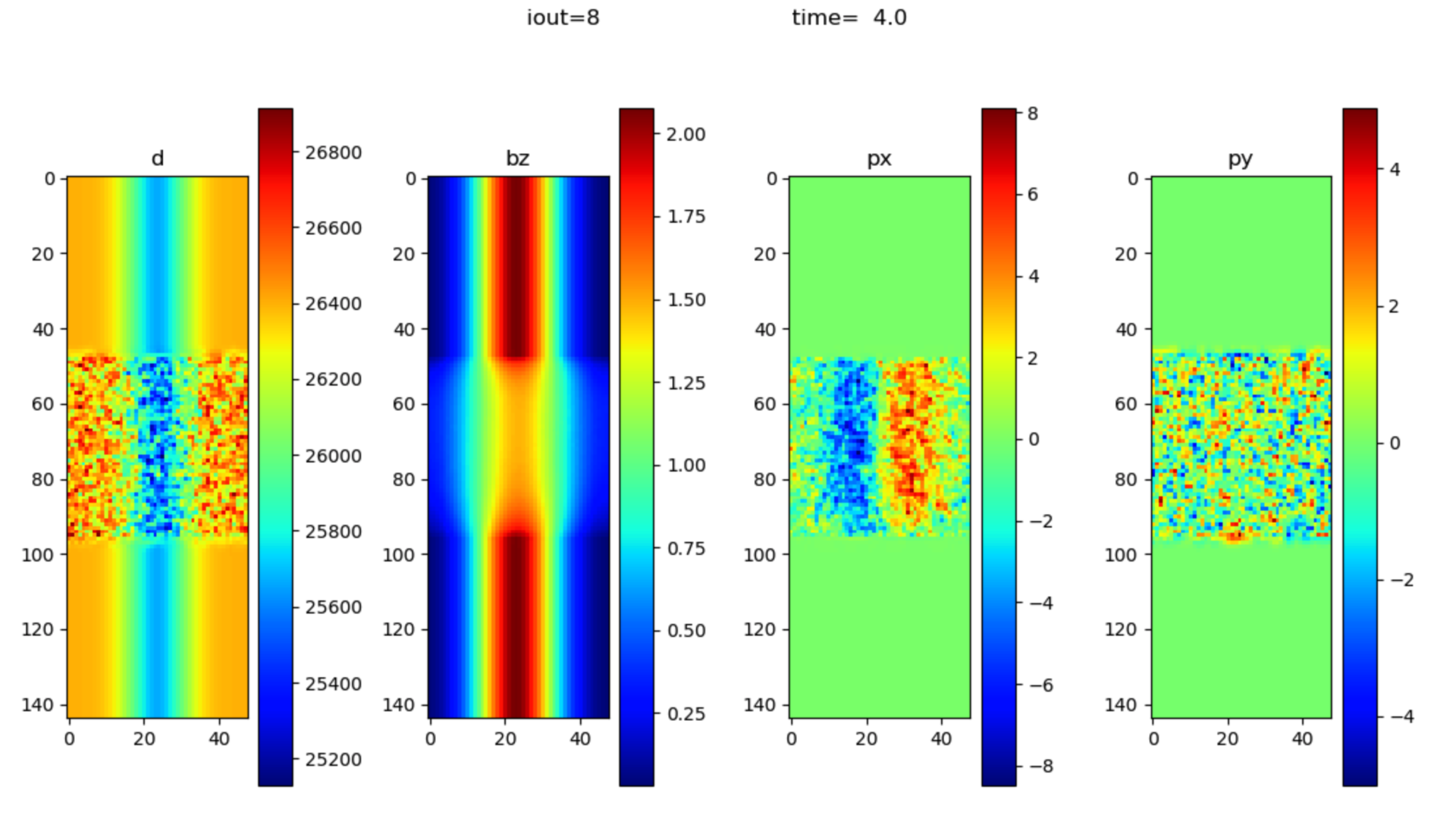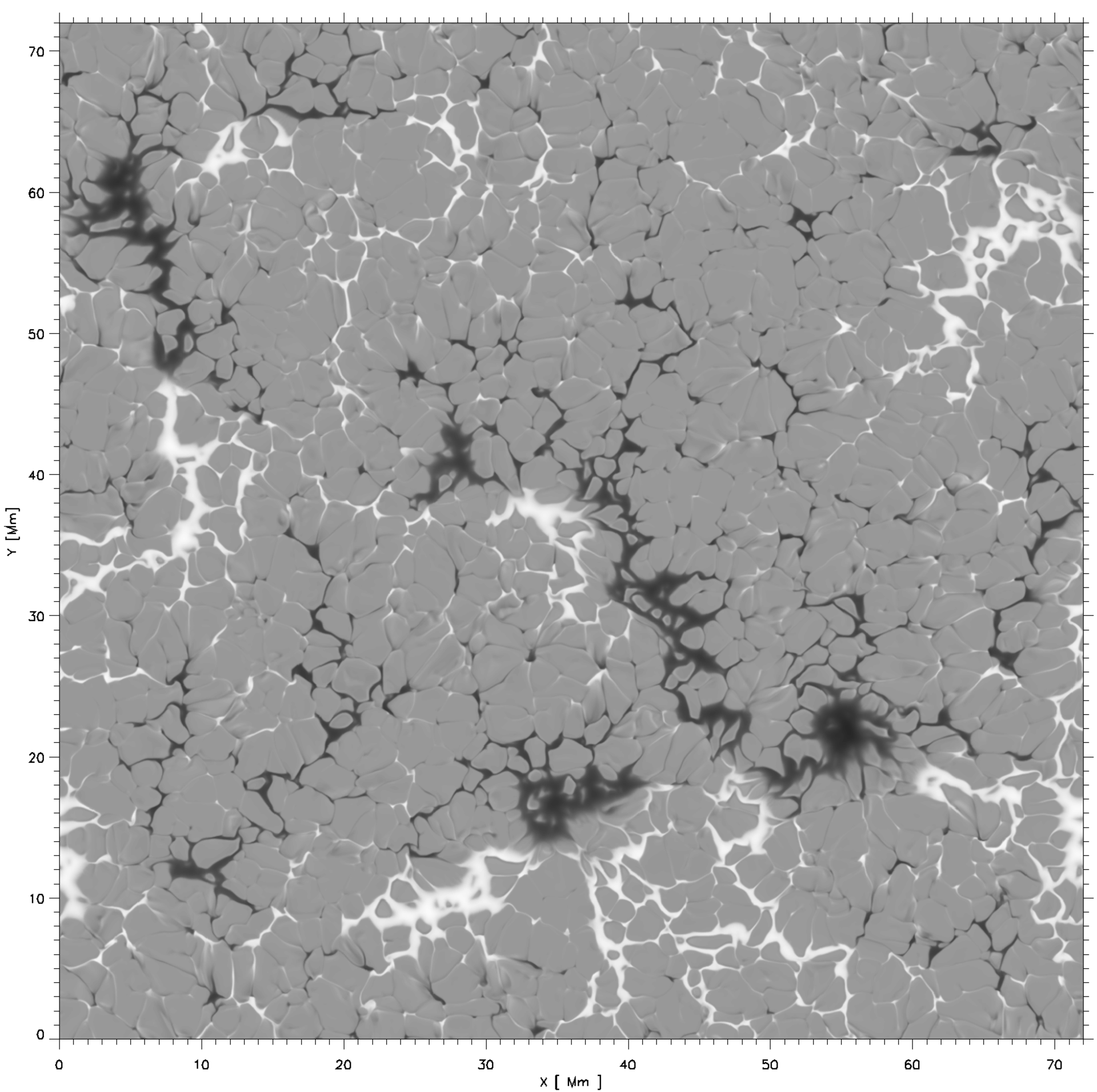The important spatial scales of the solar atmosphere span a huge range. The largest and smallest scales are dominated by different physical regimes. Examples are the deep convection zone where the typical time scale and length scale are hours and several Mm respectively and the relevant physics can be handled (almost) as simple hydrodynamics. Conversely, the inner parts of a solar flare involve magnetic instabilities than cannot be well simulated by Magneto-Hydro-Dynamics (MHD) because the scales of the electric and magnetic fields are shorter than the mean free path of the particles. We must therefore treat it by looking at individual particles or small groups of particles instead of a fluid. Because a flare is driven by the motions in the convection zone, our goal is to be able to simulate both the convection zone and the internal dynamics of a flare at the same time.
Three development paths
We have chosen to split our development into three focus areas. They are centered around our existing numerical codes and the new code DISPATCH.
Bifrost & DISPATCH
Our existing numerical code Bifrost is at the moment one of the leading numerical codes for simulating the solar atmosphere from the upper convection zone to the lower corona. Due to the inherently modular structure of Bifrost, the integration of Bifrost into DISPATCH can be done in steps. After the initial step of settling on a plan for the integration, we have also been working on a self-contained testing strategy which make it possible to stop bugs from infecting the production version of the code and should make it possible for us to evaluate implementation strategies much faster. This automatic testing regime was only partially implemented in Bifrost and existing in DISPATCH, so the two versions need integration.
Regime switching
This path is focused on the ability of DISPATCH to change the equations being solved on the fly. For us, the obvious first hurdle is the borders between volumes where particles are treated individually, and where they are treated as a fluid. A Particle-In-Cell description provides a distribution of particle velocities and masses in a cell, while Hydro-Dynamics treat averages. The description of when a volume can be treated as a fluid, and when it must be treated as a collection of particles is crucial to the precision of the results. If we get it wrong, it will be impossible to ensure conservation of mass, momentum and energy. If these quantities are not conserved, we cannot trust the results. We are working to make sure this is handled correctly.

Large dimensions and magnetic flux
To run a simulation large enough to include supergranules necessitates including at least 9 Mm of the convection zone. Here the time scale and length scale are so much larger than in the photosphere that we can ignore including the details of the photosphere to a first approximation until the deeper layers have adjusted to the radiative losses and the injection of enthropy at the bottom of the box. By only having a resolution good enough to resolve the deepest layers the computational time remains short. By gradually increasing the resolution when the deeper layers have adjusted, means we start to simulate the not so deep layers correctly. In the end we have a simulation where the deep layers are well modelled as well as the photosphere, without wasting too much computational time. We have run two simulations which are 72 Mm square and 9 Mm deep. Both are running and producing interesting science already. We can investigate the formation of magnetic structures and sunspots through these models and have a basis for later simulations.

